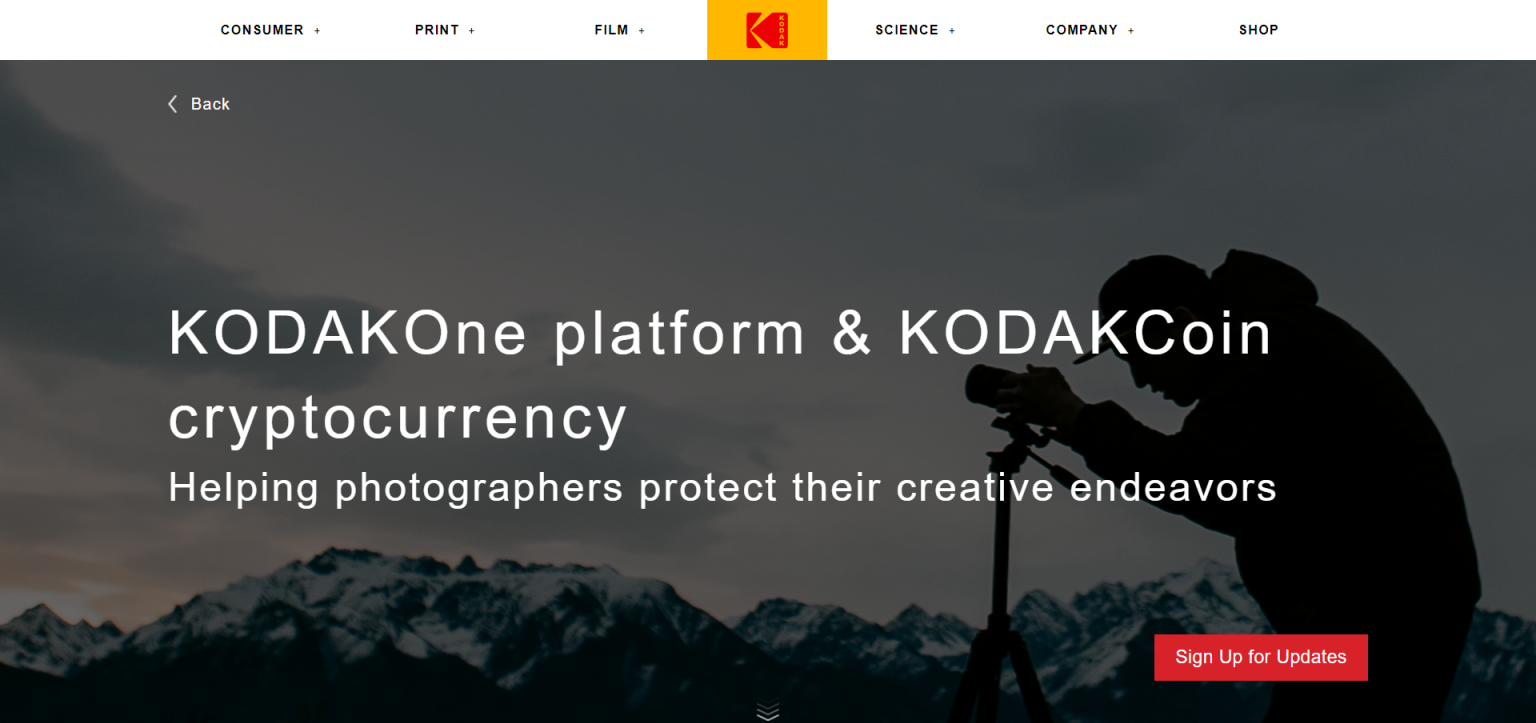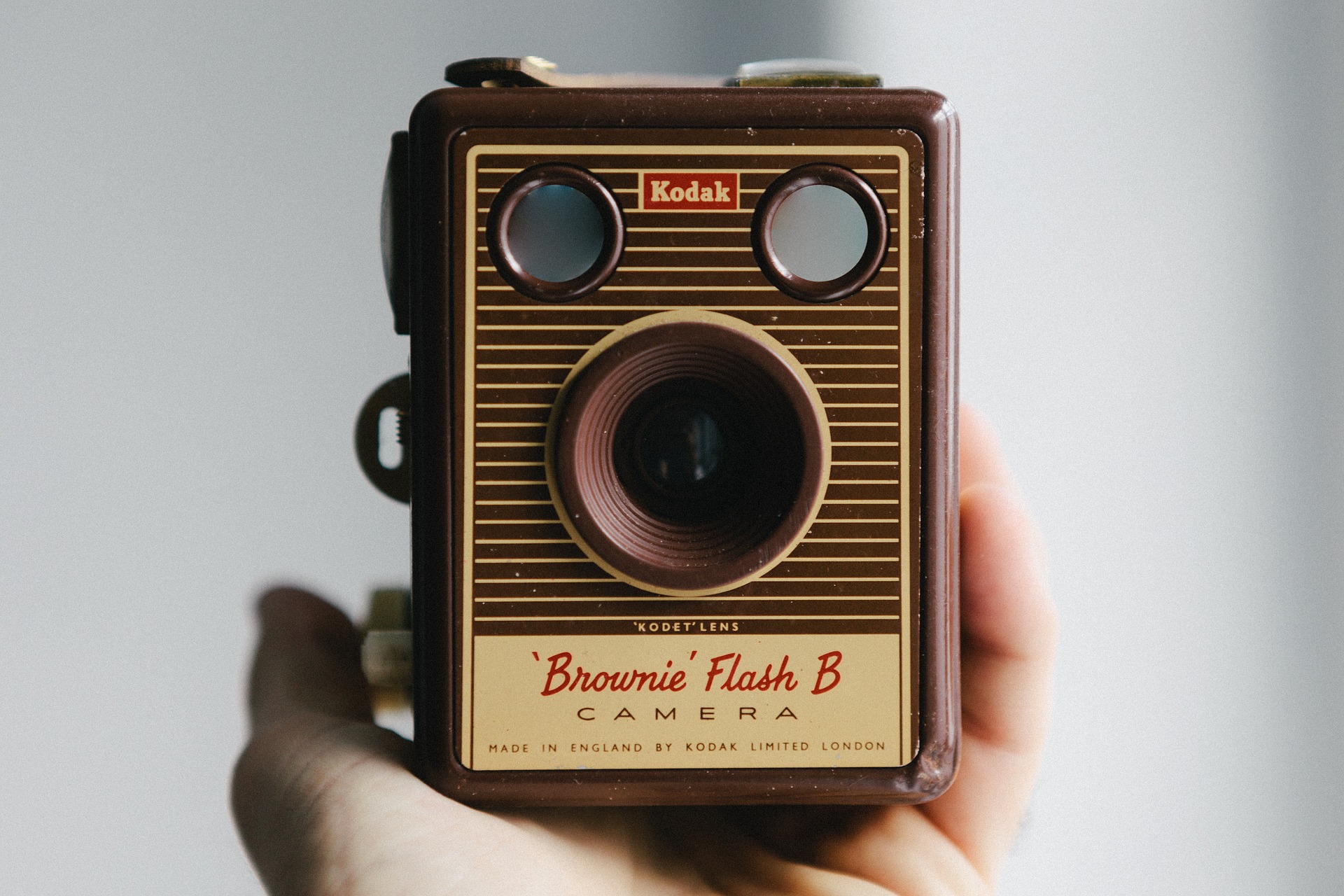We all know cryptocurrency has the power to disrupt just about any industry. It angers Wall Street and brings free mobile data to the masses, in the process leaving many happy (and rich) investors in its wake. But is it capable of raising a company, Phoenix-like, from the dead? Kodak is set to let us find out.
Kodak Sat on the Wall
If Kodak doesn’t strike you as a household name, that puts you squarely in a 2000s-baby bracket. Because for hundreds of millions of people the world over, Kodak was – up until the ‘90s, anyway – synonymous with photography. If you had a camera back in the day, 10 to 1 it was a Kodak brand.
In fact, those of us who had the pleasure of capturing the special moments in our lives on film are all too familiar with the term “Kodak moment”. This endearing phrase harkens back to a time (which, ironically, was not all that long ago) when cameras required a strip of film to immortalize what you were pointing your lens at. Since film was generally quite pricey, both to buy and to develop, you made sure to pick the topic of your photographic affections carefully. A Kodak moment, then, was one worthy of using film on.
In short, Kodak was about as synonymous with photography as you can get.
Kodak Had a Great Fall
At the height of their success, Kodak did what any innovative market leader would do: they pushed the boundaries and created the digital camera. As if the sky wasn’t the limit before … now it would be the solar system!
In fact, Kodak was so ahead of their time that it was an engineer in their employment who first invented the technology for digital photography back in 1975. The first applications for digital film were military and scientific; this was later followed by medical and news applications, but it didn’t trickle down to the mass market. In fact, Kodak actually feared that pursuing digital would impose on and threaten its existing photographic business!
As it turned out, Kodak failed to capitalize on what might possibly have been the single biggest opportunity of the company’s existence. Nikon and other competitors stepped up to the plate with the release of DSLR cameras, and, as we now know, digital cameras became more or less ubiquitous.
With the advent of digital photography, the rules changed irrevocably. Suddenly, you could click as many pictures as you wanted without having to worry about pressing the shutter by accident and ending up with a filmstrip full of the tips of Dave’s shoes. Photography, which up to that point was not for everyone due to its monetary barriers to entry and relatively high participation costs, had finally met the great equalizer.
Sadly for Kodak, due to their slowness in embracing this change in the wind, their position in the market went from leader to, fast-forward a few years, headlines such as these:

In 2012, Kodak filed for bankruptcy and sold off almost all of its legacy business. While the company emerged from its bankrupt status in 2013, it was pretty clear that the writing was on the wall: the legend was no more.
Can Crypto Put Kodak Together Again?
Recently, however, it was announced that Kodak is back with a vengeance … and this time, it’s fighting its battles on the blockchain.
The company’s cryptocurrency KODAKCoin forms part of an image rights management platform designed for photographers. Similar to blockchain startup Binded, a creative assets copyright management company we’ve reported on before, the KODAKOne platform will allow photographers to register an image in their name and, from there, license it to others.

According to Kodak CEO Jeff Clarke:
For many in the tech industry, ‘blockchain’ and ‘cryptocurrency’ are hot buzzwords, but for photographers who’ve long struggled to assert control over their work and how it’s used, these buzzwords are the keys to solving what felt like an unsolvable problem. Kodak has always sought to democratize photography and make licensing fair to artists. These technologies give the photography community an innovative and easy way to do just that.
While Kodak’s stock soared as a result of the announcement (320 percent, to be exact!), time will tell if blockchain is indeed the saving grace the company needs to rise from the dead and take its place, once more, as a household name in photography.



